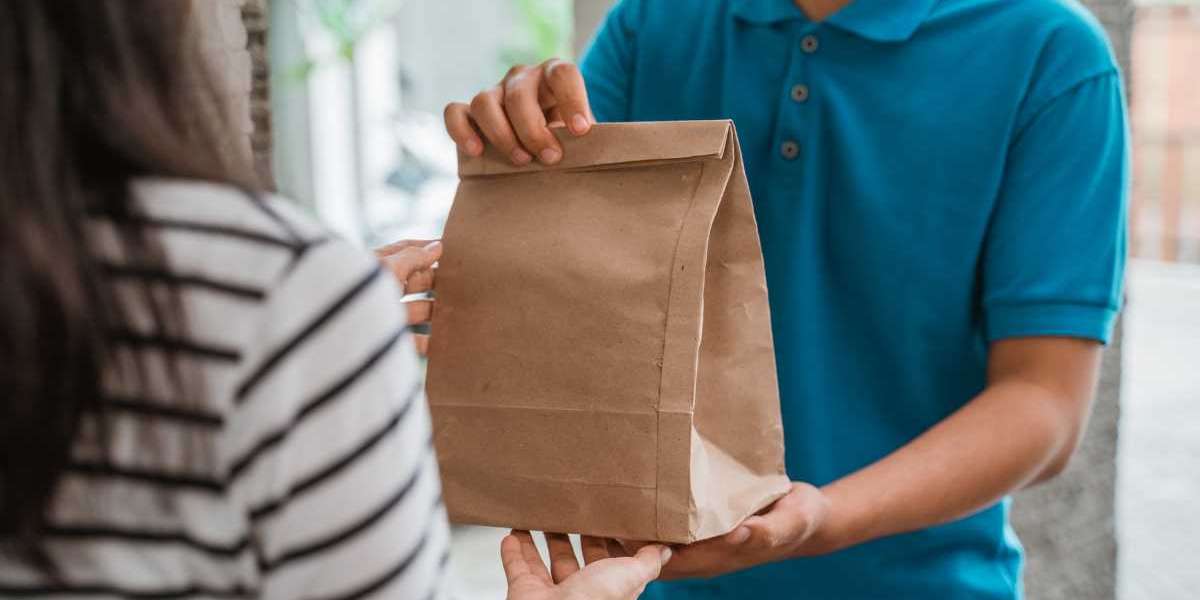The India online food delivery market size, valued at USD 7.40 billion in 2024, has experienced remarkable growth over the past three years, with a year-on-year growth rate of 100%. This rapid expansion reflects the increasing consumer demand for convenient, quick, and reliable food delivery services. The market is expected to continue its robust growth in the coming years, driven by a combination of evolving consumer behavior, technological advancements, and a shift towards digital platforms. In this blog post, we will explore the key drivers behind this growth, the challenges faced by the industry, emerging trends, and the future opportunities in the India online food delivery market.
Market Overview
The online food delivery market in India encompasses a wide range of platforms and services that connect consumers with restaurants, cloud kitchens, and food delivery providers. These services allow customers to order food online through mobile apps or websites, with deliveries made directly to their doorsteps. The convenience of online ordering, combined with a growing internet user base, has propelled the online food delivery market in India into rapid expansion. The sector includes both restaurant-to-consumer (R2C) and platform-to-consumer (P2C) models, with major players like Zomato, Swiggy, and Amazon Food capturing significant market share.
Key Drivers of Growth
Increasing Smartphone Penetration and Internet Access
One of the primary factors driving the growth of the online food delivery market in India is the rising penetration of smartphones and internet access. India is home to over 600 million smartphone users, and internet penetration continues to expand, particularly in rural areas. As more consumers have access to mobile phones and reliable internet services, the adoption of online food delivery platforms is increasing. Easy access to these platforms through apps has made food ordering more convenient and accessible for consumers, further fueling the market's growth.Changing Consumer Preferences and Lifestyles
As India’s middle class continues to grow, so does the demand for convenient, on-the-go services. Busy urban lifestyles and changing food habits have led to an increasing preference for food delivery over traditional dining out. Consumers are seeking convenience, affordability, and variety, with online food delivery platforms offering them the option to explore a wide range of cuisines and restaurants. This shift in consumer preferences towards home delivery services is driving growth in the market, particularly in urban areas where time constraints and hectic work schedules make ordering food online an attractive alternative.Expansion of E-Commerce and Digital Payment Systems
India’s expanding e-commerce sector is playing a crucial role in the growth of the online food delivery market. The growing trust in digital transactions, supported by the rise of digital payment systems such as UPI (Unified Payments Interface), digital wallets, and credit/debit cards, has made it easier for consumers to place orders online. These seamless payment options enhance the user experience, eliminating friction points in the ordering process. As consumers become more comfortable with digital payments, the overall demand for online food delivery services is expected to increase.Growth of Cloud Kitchens
The rise of cloud kitchens—also known as virtual kitchens or dark kitchens—is another significant driver of the online food delivery market in India. Cloud kitchens are delivery-only restaurants that operate without physical storefronts. They cater specifically to online orders and rely heavily on food delivery platforms to reach consumers. The model allows businesses to reduce overhead costs associated with traditional restaurants, making it an appealing option for food entrepreneurs. This growth in cloud kitchens is expanding the variety of food options available on delivery platforms, attracting more consumers and increasing market growth.Supportive Government Policies
The Indian government has been promoting the growth of the digital economy through initiatives such as Digital India and Startup India, which support the growth of e-commerce platforms, including online food delivery services. These policies foster a favorable business environment by encouraging the use of technology and digital infrastructure. Additionally, the government's focus on enhancing logistics and supply chain management has also benefitted the online food delivery market by improving delivery efficiency and reducing operational costs for food delivery companies.
Challenges to Market Growth
Intense Competition
The online food delivery market in India is highly competitive, with numerous players vying for market share. Major platforms like Zomato and Swiggy dominate the market, but there are also newer entrants, including Amazon Food and local, regional players. This intense competition forces companies to continuously innovate, reduce delivery times, improve customer service, and offer discounts to attract consumers. While competition can drive growth, it can also limit profit margins, especially for smaller players or startups trying to establish themselves in the market.Logistical and Delivery Challenges
The success of online food delivery services depends heavily on efficient logistics and timely delivery. In a country as large and diverse as India, managing delivery infrastructure and supply chains can be a challenge. Urban congestion, inadequate infrastructure in rural areas, and last-mile delivery issues contribute to delays, higher operational costs, and unsatisfied customers. To maintain their competitive edge, online food delivery platforms need to invest in improving delivery infrastructure and exploring more efficient delivery models, including partnerships with local delivery services and the use of technology to track orders in real-time.Rising Operational Costs
While the online food delivery business has seen significant growth, rising operational costs pose a challenge. These include the cost of maintaining and improving the platform's technology, managing customer service teams, handling deliveries, and paying commissions to restaurant partners. Delivery personnel, especially in smaller cities, often demand higher wages due to inflation and fuel price hikes, adding to the operational cost burden. As the market expands, companies will need to find ways to manage and reduce these costs without compromising service quality.
Trends Shaping the Market
Personalized User Experience
One of the key trends in the India online food delivery market is the increasing emphasis on providing a personalized user experience. Food delivery platforms are leveraging artificial intelligence (AI) and machine learning (ML) to analyze consumer behavior, preferences, and purchase history. This data helps platforms provide tailored recommendations, customized offers, and personalized menus to enhance the customer experience and increase order frequency. As these technologies improve, the level of personalization will continue to rise, driving customer loyalty and engagement.Focus on Health-Conscious and Sustainable Eating
As Indian consumers become more health-conscious, there is a growing demand for healthy and sustainable food options. Online food delivery platforms are responding by offering organic, vegetarian, vegan, and low-calorie menu options. The trend towards sustainable eating is also driving interest in packaging that is environmentally friendly, with many food delivery services opting for biodegradable or recyclable packaging materials. This trend is expected to continue, with more consumers opting for healthier food choices and businesses adapting to these preferences.Integration with Social Media and Influencer Marketing
Social media has become an integral part of food marketing, with platforms like Instagram and Facebook influencing consumers’ dining choices. Online food delivery companies are increasingly using social media marketing and partnering with influencers to attract new customers, promote special offers, and drive engagement. The increasing use of social media platforms for food discovery will further boost demand for food delivery services, especially among younger consumers who are highly active on social media.
Market Segments
By Service Type
The market can be segmented into restaurant-to-consumer and platform-to-consumer models. The restaurant-to-consumer model, where restaurants manage their own delivery services, remains significant, but the platform-to-consumer model, which includes third-party platforms like Swiggy and Zomato, is expected to see the fastest growth due to its convenience.By Cuisine Type
The online food delivery market can also be segmented by the type of cuisine, including Indian, Chinese, Continental, and fast food. Indian cuisine remains the most popular choice, but consumers are increasingly exploring a variety of international cuisines, especially through cloud kitchens.By Region
The market can be divided by region, with tier 1 cities like Mumbai, Delhi, and Bengaluru leading the demand for online food delivery. However, there is significant growth potential in tier 2 and tier 3 cities as internet access and smartphone penetration increase in these areas.






